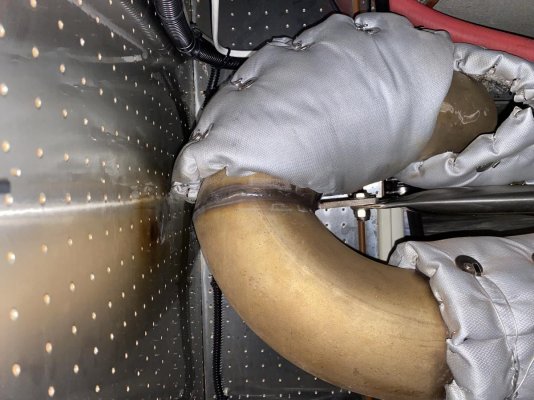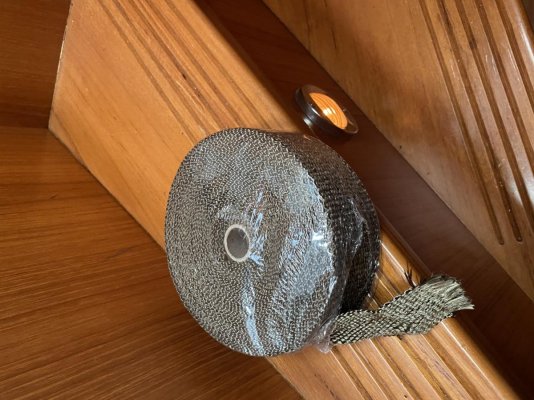I had a new exhaust built and installed. The exhaust is shrouded in wire laced lagging. The engine room ceiling and walls are covered in perforated aluminum covered wall board. The insulated riser actually touches the ceiling and turned the “wallboard” a dark color.
I have googled to find how much space is required between an insulated exhaust pipe and ceiling tile to no avail.
Looking at the build it appears there is a lattice structure of 2x4’s which are sandwiched between the upper flooring and engine room ceiling panels.
My thought is to remove a section of ceiling panel which will give a 3 to 4” clearance between the exhaust and flooring substrate.
The hot spot is directly above a seam in the insulation and I can put my finger in that seam. My plan is to remove the wire fastened lagging and wrap that seam area with some exhaust insulating tape and then resecuring the lagging.
I will then attach a quarter inch thick aluminum plate to the floor substrate as not only a heat shield but a point I can take temp measurements when running.
Your thoughts will be appreciated. Also what is a safe clearance distance for this exhaust?
I have googled to find how much space is required between an insulated exhaust pipe and ceiling tile to no avail.
Looking at the build it appears there is a lattice structure of 2x4’s which are sandwiched between the upper flooring and engine room ceiling panels.
My thought is to remove a section of ceiling panel which will give a 3 to 4” clearance between the exhaust and flooring substrate.
The hot spot is directly above a seam in the insulation and I can put my finger in that seam. My plan is to remove the wire fastened lagging and wrap that seam area with some exhaust insulating tape and then resecuring the lagging.
I will then attach a quarter inch thick aluminum plate to the floor substrate as not only a heat shield but a point I can take temp measurements when running.
Your thoughts will be appreciated. Also what is a safe clearance distance for this exhaust?





